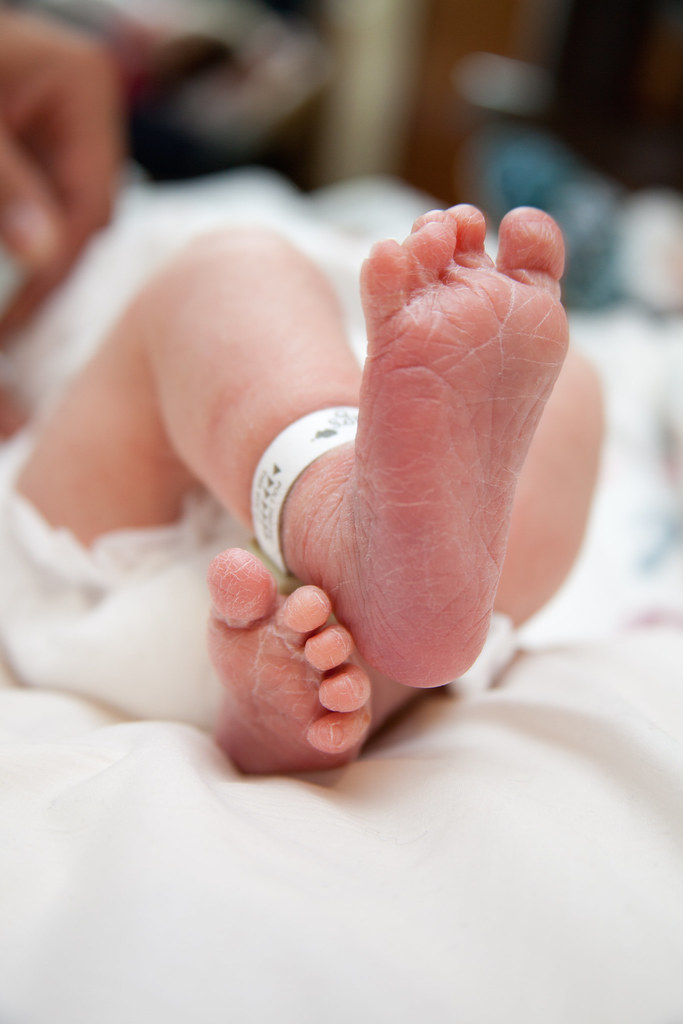Researchers at the University of Michigan School of Medicine recently examined the outcomes of water births and land births with the purpose of informing the public about the benefits and downfalls of both birthing options. Water birth is the less popular birthing option compared to land birth, but water birth has become increasingly more popular within the last few years. Limited research was conducted regarding water births prior to this study. As a result, many individuals were not able to make an informative decision about which birthing option was best for them. This study allowed researchers to quantitatively and qualitatively investigate both birthing options.
The researchers decided to collect data from two individual yet similar hospital practices within the United States. The physical state of the mother and the newborn were considered in determining the overall birthing outcome. They chose to consider 3 different newborn outcomes: Apgar scores less than 7 at 1 and 5 minutes, admission into the NICU, and death. Apgar scores less than 7 often indicate that the newborn is suffering from something serious. Low Apgar scores are very undesirable outcomes. In addition to considering the newborn, the researchers chose to consider 2 different maternal outcomes: perineal lacerations and postpartum hemorrhage. Perineal lacerations, or vaginal tears, are extremely painful and require surgical repair. Postpartum hemorrhage, or excessive bleeding, can drop the mother’s blood pressure leading to shock or death. Both outcomes are serious and undesirable.
Almost 2500 cases were available for scientific analysis. Only about 16% of the cases were water births. This percentage is relatively low in comparison to the 84% of land births, however, it was enough to provide well supported data.

Creative Commons Licensed
The results regarding the newborn outcomes were conclusive and seemingly similar for both water births and land births. There were no differences in the Apgar test and NICU admission outcomes. In addition, there were no infant deaths. You may be wondering why there were no differences in outcomes for water births and land births. It seems that completely different birthing environment would yield different results. You are not alone in thinking this. When I first interpreted the results from this study, I found the lack of different outcomes for newborns to be curious. After pondering, I realized that the results do make sense. The birthing environments are different, but they are different for the mother. The birthing environment for the fetus remains the same as the fetus spends most of the birthing process still within the mother’s body. The environment inside of the mother is the environment that has the most impact on the newborn’s outcome. Therefore, the outside environment, water or land, does not play a large factor in the newborn’s health.
The results regarding the mother’s outcomes were relatively conclusive and differed depending on the birthing environment. According to the data, 65% of women in the water birth group had an intact perineum and 61% of women in the land birth group had an intact perineum. The numbers indicate that women who choose water birth are more likely to keep their perineum intact.

Creative Commons Licensed
Furthermore, I think it is important to acknowledge the possibility of error and other factors impacting the results. These percentages are very close, which means the difference in outcome may not be significant. It would be wise to conduct more research to know for sure, but it is safe to say, based on this study, that water birthing will result in a better outcome for the mother in regard to the perineum. In regard to hemorrhage, there were no significant differences in outcomes found. Overall, I can confidently say that the mothers’ outcomes are more greatly impacted by the birthing environment as opposed to the newborns’ outcomes.
The only major difference in outcomes that the study discovered was that of the mother’s perineum. This may be enough to convince you to do a water birth or this factor may be insignificant to you. Regardless, the study provided valuable insight on birthing options. Now that you are more informed, I hope that you can make the best decision about your personal birthing process. The water birth versus land birth debate will probably continue for years and more opinions will form. Who knows, maybe more research will be done that concludes that one option is better than the other. Until that day comes, you must make the best decision for you. Do not let that water and land power struggle cloud your judgement.
Bailey, J.M., Zielinski, R.E., Emeis, C.L., and Low, L.K. 2019. A retrospective comparison of waterbirth outcomes in two United States hospital settings. Birth 1: 1-7.

Alex
"This title was very eye catching! That is so interesting that such a ..."
Alex
"This is really interesting! The fact that crops and plants are damaged is ..."
Alex
"Well done, this article is great and the information is very captivating! Ethics ..."
Alex
"I was intrigued throughout the whole article! This is such an interesting topic, ..."
Alex
"This is such an interesting article, and very relevant!! Great job at explaining ..."
Grandpa
"Honey You Did a good job I will forward to my eye doctor "
murphymv
"This article is fascinating because it delves into the details of the research ..."
murphymv
"I agree, adding the photo helped solidify the main finding. "
murphymv
"This is a fascinating finding. I hope this innovative approach to improving transplants ..."
Sherzilla
"This is a great article! I would really love to hear how exactly ..."
Sherzilla
"It's disappointment that these treatments were not very effective but hopefully other researchers ..."
Sherzilla
"I agree with your idea that we need to shift our focus to ..."
Sherzilla
"It's amazing to see how such an everyday household product such as ..."
Lauren Kageler
"I will be interested to see what the data looks like from the ..."
Lauren Kageler
"A very interesting article that emphasizes one of the many benefits that the ..."
maricha
"Great post! I had known about the plight of Little Browns, but I ..."
Sherzilla
"I assumed cancer patients were more at risk to the virus but I ..."
Sherzilla
"Great article! It sheds light on a topic that everyone is curious about. ..."
maricha
"This article is full of really important and relevant information! I really liked ..."
maricha
"Definitely a very newsworthy article! Nice job explaining the structure of the virus ..."
maricha
"It's interesting to think that humans aren't only species dealing with the global ..."
murphymv
"This is very interesting and well explained. I am not too familiar with ..."
Lauren Kageler
"Great article! This post is sure to be a useful resource for any ..."
Lauren Kageler
"Definitely seems like an odd pairing at first, but any step forward in ..."
murphymv
"What an interesting article! As you say, height and dementia seem unrelated at ..."
murphymv
"Great article! I learned several new methods of wildlife tracking. This seems like ..."
murphymv
"Very interesting topic! You explained cascade testing and its importance very well. I ..."
Alex
"This article is really interesting! What got me hooked right away was the ..."
Sabrina
"I found this article super interesting! It’s crazy how everyday products can cause ..."
Erin Heeschen
"I love the layout of this article; it's very eyecatching! The advancements of prosthetics ..."
murphymv
"Awesome article! I like the personality in the writing. Flash Graphene not only ..."
murphymv
"Very interesting work! I don't know a whole lot about genetics, but this ..."
Cami Meckley
"I think the idea of using virtual reality technology to better help prepare ..."
Erin Heeschen
"I wonder if there's a connection between tourist season and wildfires in the ..."
Ralph berezan
"Not bad Good work "
Michelle
"This sounds like it would be a great tool for medical students! ..."